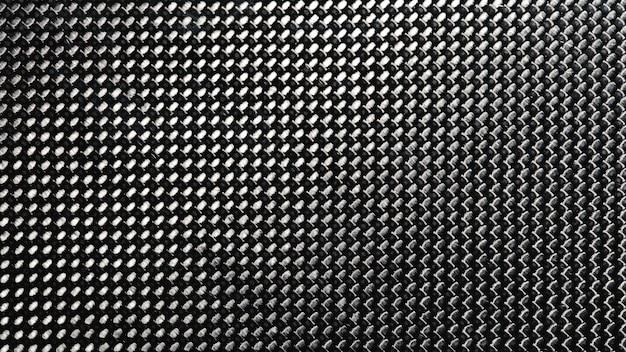Carbon fiber has become synonymous with strength and durability in various industries, including aerospace, automotive, and sports. This lightweight material is known for its exceptional strength-to-weight ratio, making it a popular choice for applications where strength and performance are crucial. But just how strong is carbon fiber, and what does it take to break it?
In this blog post, we will delve into the world of carbon fiber and explore its breaking point. We will also address common questions such as how to check for carbon fork damage, why carbon fiber is expensive, and whether it is easy to damage a carbon bike frame. Join us as we unravel the mysteries of this incredible material and discover the force it can withstand.
How Much Force Does It Take To Break Carbon Fiber
Carbon fiber has become an increasingly popular material in various industries. It’s known for being lightweight, strong, and incredibly durable. But have you ever wondered just how much force it would take to break this wonder material? Let’s dive into the fascinating world of carbon fiber and find out the answer together!
The Strength of Carbon Fiber
When it comes to strength, carbon fiber is no lightweight (pun intended!). This incredible material is renowned for its exceptional tensile strength, which refers to its ability to withstand pulling or stretching forces. In fact, carbon fiber is about five times stronger than steel, pound for pound. Impressive, right?
Testing Carbon Fiber’s Breaking Point
To determine the force required to break carbon fiber, engineers put it through rigorous tests. One of the most common methods is the “tensile test,” where a sample of carbon fiber is pulled until it reaches its breaking point. This test allows scientists to measure the maximum force or stress that carbon fiber can withstand before it gives way.
Units of Measurement: Breaking Stress
Now, to put some values into perspective, let’s talk numbers! The breaking stress of carbon fiber is typically measured in either pounds per square inch (psi) or megapascals (MPa). Keep in mind that force is dependent on factors like the type and quality of carbon fiber used, the manufacturing process, and the specific application.
The Breaking Point of Carbon Fiber
While it’s difficult to pinpoint an exact answer to “How much force does it take to break carbon fiber?” due to the aforementioned variables, let’s dive into some general figures. On average, carbon fiber composites have a breaking stress of around 400,000 psi or 2,758 MPa. Impressive, right? To put this in perspective, that’s roughly equivalent to the pressure exerted by 2,000 fully grown African elephants standing on top of a carbon fiber plate. That’s one tough material!
Factors that Affect Carbon Fiber’s Strength
Various factors can impact the breaking strength of carbon fiber. These include the number of layers in the composite, the direction of the fibers, the quality of the resin used, and the curing process. Each of these variables can significantly alter the force required to break carbon fiber, making it essential to carefully engineer and manufacture products using this fantastic material.
Pushing the Limits
As technology continues to evolve, engineers and researchers are constantly pushing the limits of what carbon fiber can withstand. By experimenting with different manufacturing techniques and variations in carbon fiber composition, they hope to further enhance its strength and durability. Who knows what incredible feats we’ll achieve in the future?
Carbon fiber is an exceptional material known for its incredible strength and durability. While the specific force required to break carbon fiber depends on various factors, it’s safe to say that this wonder material can endure immense pressure. So, the next time you marvel at a carbon fiber product, remember the immense strength hidden within those sleek fibers.
FAQ: How Much Force Does It Take To Break Carbon Fiber
Carbon fiber is renowned for its strength-to-weight ratio, making it a popular choice in various industries, including aerospace, automotive, and sports. But how much force can carbon fiber withstand before it breaks? In this comprehensive FAQ-style subsection, we’ll uncover the answers to your burning questions about the durability and limitations of carbon fiber.
How do you check for carbon fork damage
If you suspect damage to your carbon fork, thorough inspection is crucial. Here’s a step-by-step guide to evaluating potential damage:
- Visual Assessment: Examine the fork for any visible cracks, delamination, or distortion.
- Tap Test: Gently tap the fork with a coin or plastic object and listen for any changes in sound, indicating internal damage.
- Flex Test: Holding the fork securely, flex it slightly to identify any unusual creaking or movement.
- Professional Evaluation: If you’re uncertain about any findings or want a more accurate assessment, consult a professional bicycle mechanic.
Why is carbon fiber so expensive
Carbon fiber’s hefty price tag is influenced by several factors:
- Raw Materials: Producing carbon fiber requires specialized materials, such as polyacrylonitrile, which can be costly.
- Labor-Intensive Manufacturing: Carbon fiber production involves intricate processes like layup, curing, and finishing, contributing to higher manufacturing expenses.
- Technological Innovation: Continuous development of advanced carbon fiber manufacturing techniques pushes research and development costs, impacting its overall price.
- Specialized Production Facilities: Manufacturing carbon fiber requires specialized facilities with controlled environments, further driving up costs.
Is it easy to damage a carbon bike frame
While carbon bike frames offer impressive strength and durability, they do have their vulnerabilities. Compared to traditional materials like steel or aluminum, carbon fiber frames can be more susceptible to impact damage. Hard hits or crashes can potentially cause cracks or delamination. However, with proper care and maintenance, carbon frames can withstand normal riding conditions without issues.
Which fiber is bulletproof
Although carbon fiber is renowned for its strength, it is not considered bulletproof. Bulletproof materials often rely on different materials and designs, such as aramid fibers like Kevlar, to provide the necessary resistance to ballistic threats.
What is the strongest type of carbon fiber
The strength of carbon fiber can vary depending on its manufacturing process and specific application. However, among the different types of carbon fiber, high-modulus carbon fiber is generally regarded as one of the strongest. It exhibits exceptional stiffness and strength properties, making it suitable for demanding applications where maximum strength is required.
Does carbon fiber lose strength over time
Carbon fiber can experience degradation and loss of strength over an extended period, particularly when exposed to harsh conditions or prolonged UV exposure. However, with proper care and maintenance, this degradation can be minimized, and carbon fiber components can maintain their strength for many years.
Can you make a sword out of carbon fiber
While carbon fiber’s strength and lightweight properties might make it seem like an ideal material for a sword, it is not typically used for such purposes. Traditional swords rely on a combination of strength, flexibility, and weight distribution, characteristics that carbon fiber doesn’t possess in the same way. Carbon fiber is better suited for modern applications where its specific properties provide a competitive advantage.
Which is stronger, carbon fiber or Kevlar
Comparing carbon fiber and Kevlar (an aramid fiber), it’s important to note that both have their unique strengths. Carbon fiber excels in high-strength applications requiring rigidity and stiffness, while Kevlar offers exceptional strength-to-weight ratio, excellent impact resistance, and thermal stability. Ultimately, the choice between the two will depend on the specific requirements of the application.
Is carbon fiber really stronger than steel
Carbon fiber is renowned for its exceptional strength-to-weight ratio, often surpassing steel in terms of strength. However, it’s essential to consider that different forms of carbon fiber and steel have varying strengths. While some carbon fiber composites can exhibit superior strength, certain steel alloys may still outperform lower-grade carbon fiber in certain applications. The choice between the two materials should be based on the specific needs and requirements of the project.
How long can carbon fiber last
The lifespan of carbon fiber components can vary depending on factors such as usage, maintenance, and exposure to harsh conditions. Properly cared for, carbon fiber items can last for many years—a well-maintained carbon bike frame, for example, can provide reliable performance for a decade or more.
What are the disadvantages of carbon fiber
While carbon fiber offers numerous advantages, it’s important to be aware of its limitations. Some drawbacks include:
- Cost: As mentioned earlier, carbon fiber products tend to be more expensive than those made from traditional materials.
- Brittleness: Carbon fiber can be more susceptible to impact damage, such as cracking or delamination, compared to materials like steel or aluminum.
- Repair Difficulty: Repairing damaged carbon fiber components often requires specialized skills and equipment, making it more challenging and costly than fixing metal parts.
How easy is it to break a carbon frame
Carbon frames are designed to withstand the rigors of normal riding conditions. While it is possible to break a carbon frame with extreme force, it is uncommon in typical usage scenarios. Carbon fiber possesses excellent strength properties, making it highly resistant to bending and torsional forces that commonly occur during cycling.
Does carbon fiber break easily
Carbon fiber is engineered to be incredibly strong, providing high tensile and compressive strength. However, like any material, it has its limits. Excessive force, particularly in concentrated areas or at weak points, can cause carbon fiber to crack or fail. Under normal conditions, carbon fiber components are unlikely to break easily.
How much force can carbon fiber take
The force required to break carbon fiber varies depending on various factors, such as the specific type and quality of the carbon fiber, its manufacturing process, and the application. In general, carbon fiber can withstand forces comparable to or even exceeding those encountered in demanding applications like aerospace and high-performance sports. However, precise force limits may differ for different carbon fiber products.
Is carbon fiber stronger than titanium
When comparing carbon fiber and titanium, it’s essential to consider that both materials have unique properties that make them suitable for different applications. Titanium is known for its exceptional strength and corrosion resistance, while carbon fiber excels in lightweight and high-strength applications. The choice between the two materials will depend on the specific requirements of the project or product.
Do carbon frames crack
Carbon frames can develop cracks under certain circumstances, such as exposure to high levels of stress, impact damage, or improper use. However, it’s worth noting that modern carbon fiber frames are designed and manufactured to be robust and reliable. With proper maintenance and care, including regular inspections, cracks in carbon frames can be minimized or avoided altogether.
Can carbon fiber stop a bullet
While carbon fiber is strong and has excellent energy-absorbing properties, it is not typically used as a material for bulletproof protection. Bulletproof designs often incorporate specially engineered materials like aramid fibers (e.g., Kevlar) or ceramics to effectively stop ballistic threats.
Does carbon fiber degrade in sunlight
Prolonged exposure to ultraviolet (UV) radiation from sunlight can degrade carbon fiber over time. UV rays can cause the epoxy matrix that holds the carbon fibers together to break down, potentially leading to decreased strength and performance. To protect carbon fiber components, it is advisable to use appropriate UV-resistant coatings or keep them away from prolonged direct sunlight exposure.
Understanding the limits and capabilities of carbon fiber is essential for maximizing its benefits while minimizing potential risks. Although carbon fiber is lauded for its exceptional strength and durability, it is not impervious to damage. By ensuring proper maintenance, periodic inspections, and avoiding excessive forces, you can ensure the longevity and performance of carbon fiber components in various applications. So go ahead, embrace the lightweight marvel of carbon fiber, and make the most of its incredible potential!

